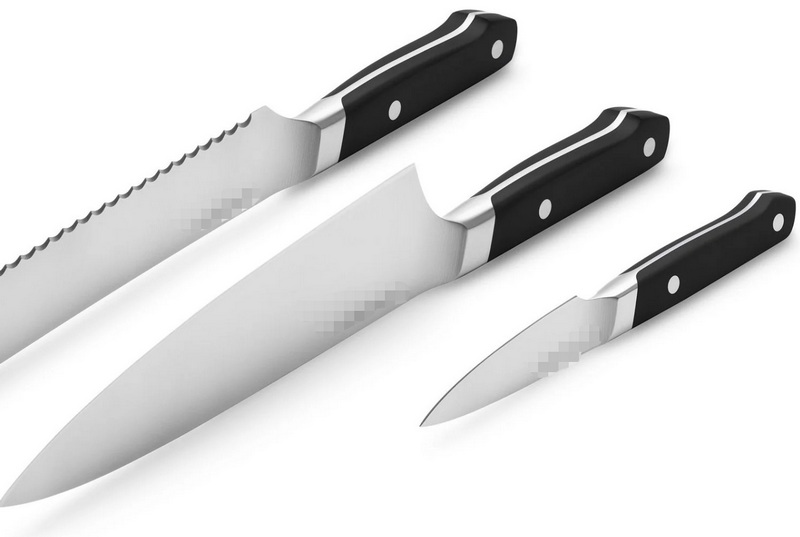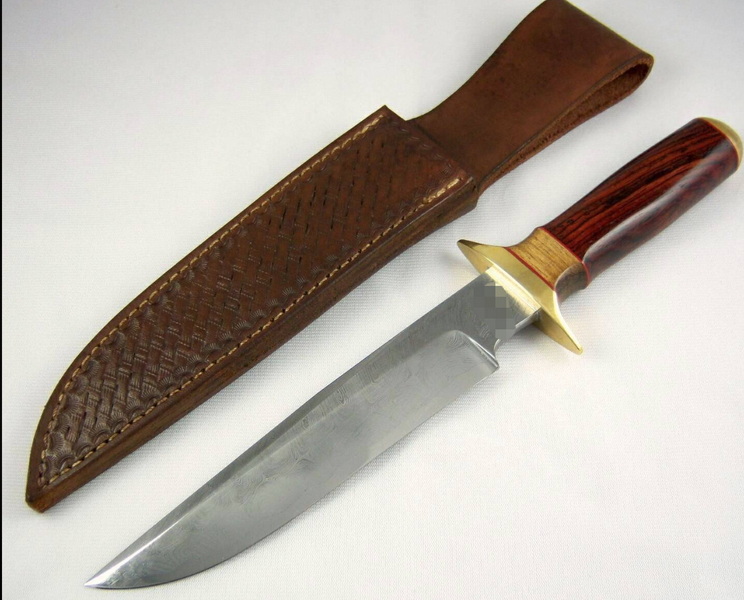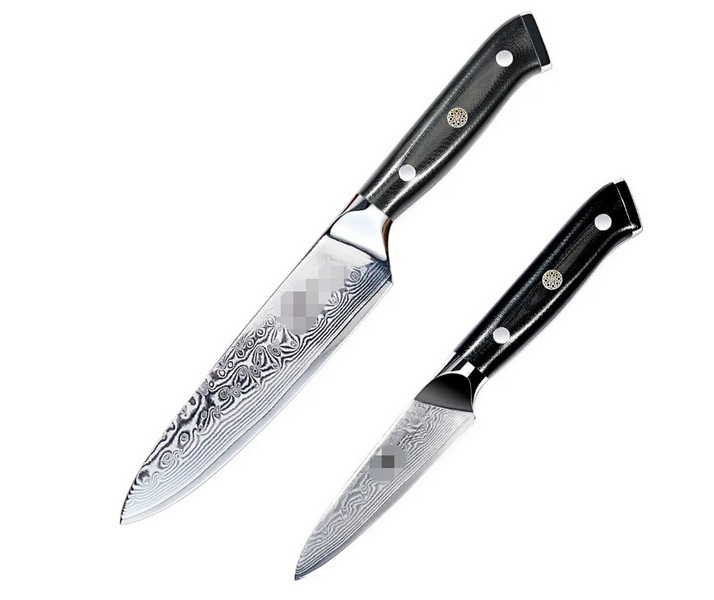- All
- Product Name
- Product Keyword
- Product Model
- Product Summary
- Product Description
- Multi Field Search
Views: 222 Author: Ann Publish Time: 2025-10-23 Origin: Site











Content Menu
● Blade Shapes and Styles (Paring Knife Blade Shapes)
>> Classic Straight Paring Knife
>> Bird's Beak (Turning Paring Knife)
● Material and Geometry Considerations
>> Handle Ergonomics and Materials
>> Market-Oriented Customization
>> Detail Carving and Garnish Work
● Dicing and Mince Prep for Small Batches
● Cleaning
● Experimentation and Prototyping
● Manufacturing and Quality Control
● Heat Treatment and Surface Finishes
● Certification and Compliance
● Packaging and Private-Label Brand Positioning
● FAQs (one consolidated section)
>> What is the best paring knife blade shape for beginners?
>> How does blade angle affect precision tasks?
>> What materials are best for paring knives used in professional kitchens?
>> How should a paring knife be maintained to keep edge longer?
>> Can paring knives be customized for private label brands?
Paring Knife is a quintessential tool in every professional kitchen and a staple for home chefs seeking precision in small-scale tasks. This comprehensive guide delves into the blade shapes, geometry, and practical uses of the Paring Knife, with a focused lens on how OEM partners can tailor designs to meet diverse global markets. From classic straight blades to specialized profiles like sheep's foot and bird's beak, each design serves distinct tasks—from delicate peeling to intricate decorative carving. Readers will discover material choices, edge geometries, handle ergonomics, and manufacturing considerations that drive consistent performance across high-volume production.Throughout, Paring Knife remains the central keyword anchor, reinforcing its role in precision cutting, craftsmanship, and OEM differentiation.

Paring Knife blade shapes define how the edge meets the workpiece, and the choice can dramatically affect precision, control, and comfort. In professional settings, three blade styles represent the core spectrum: straight/parabolic classic, sheep's foot, and bird's beak. Each shape offers advantages for specific tasks and markets, and understanding these distinctions helps OEM partners align product families with regional preferences.
The classic straight blade resembles a miniature chef's knife silhouette, with a slender profile that tapers toward a fine tip. This shape is exceptionally versatile for peeling, trimming, coring tiny fruits, seeding peppers, deveining shrimp, and delicate tasks such as trimming herbs. For brand partners, the straight Paring Knife provides a reliable baseline that satisfies a broad range of customer needs while enabling straightforward manufacturing tolerances. In an OEM program, you can confidently offer a 3.0–3.5 inch blade length with a uniform bevel and a balanced weight distribution to support precise control during paring work.
The sheep's foot blade features a flattened edge near the handle that curves gently toward the tip, allowing the user to lay the blade flat on the work surface for controlled, blade-down peeling and trimming. This design excels at tasks requiring full blade contact with the cutting board, such as peeling rounded vegetables or shaping intricate corners on fruit garnishes. For private-label customers, sheep's foot blades can be a distinctive design element that communicates precision and safety, as the flatter profile reduces the risk of knuckle contact with the work surface. In manufacturing terms, this profile often yields slightly thicker spine transitions near the handle, which can influence balance and edge support during long production runs.
The bird's beak, or turning Paring Knife, culminates in a fine, pointed tip with a pronounced curvature. This shape is ideal for detail work such as trimming around seeds, creating decorative cuts, peeling citrus zest in tight curves, and intricate carving on small fruits and vegetables. The slender, acute tip enables access to small crevices that a flatter blade cannot reach. For OEM partners targeting specialty retailers or culinary schools, offering a bird's beak variant alongside standard models adds a premium, craft-oriented option that appeals to chefs and enthusiasts who emphasize decorative knife work.
Blade material and geometry underpin edge retention, corrosion resistance, and overall durability—critical factors for OEM programs that must deliver consistent quality across thousands of units.
- High-carbon stainless steel: Balances hardness, wear resistance, and corrosion resistance—an excellent default for mass production and global distribution. It sharpens readily, maintains a keen edge, and tolerates frequent use in professional kitchens.
- Powder metallurgy stainless steels: These steels offer superior hardness and edge retention, with improved toughness and stain resistance, suitable for premium private-label lines that emphasize longevity and performance in demanding environments.
- Carbon steel: Known for superb edge holding and ease of sharpening, but requires diligent care to prevent rust, especially in humid or acidic environments. Carbon steel Paring Knives can be positioned as entry-level premium options for markets with strong emphasis on traditional crafts.
- Damascus or patterned steels: Provide aesthetic appeal and marketing differentiation, often favored in gift sets or chef's companions where visual impact enhances perceived value. For OEM projects, Damascus blades can be paired with distinctive handle materials to create signature lineups.
- Bevel angle: Typical paring knife edges range from 15° to 20° per side, with 15°–17° often chosen for high-precision fruit and vegetable work. Narrow angles yield sharper initial cuts but may require more frequent maintenance in aggressive use contexts.
- Ground vs. polished edges: A polished edge delivers smoother slicing and reduced friction, beneficial for delicate tasks. A slightly rounded micro-bevel can improve edge strength for demanding peeling and trimming tasks without sacrificing precision.
- Spine and tang: A comfortable, tapered spine aids in balance and control. Full tang construction generally enhances durability and handling stability across long production cycles.
- Rockwell hardness and heat treatment: Targeted heat treatment profiles ensure a durable edge that resists chipping during repetitive OEM production tasks and meets performance expectations in various markets.
- Synthetic composites (PP,fiber-reinforced polymers): Provide moisture resistance, bold color options, and cost efficiency for mass production. Ergonomic contours enable comfortable grip during precision work.
- Wood (lightweight hardwoods, stabilized woods): Offers premium aesthetics and tactile feel; requires proper sealing and maintenance guidance to customers but can elevate brand perception in gift or luxury lines.
- Composite laminates: Combine aesthetic appeal with moisture resistance, enabling longer life in commercial kitchens and shipping-friendly packaging for international routes.
- Balance and weight distribution: A well-balanced Paring Knife enhances control for accurate peeling and trimming. OEM programs can adjust handle thickness, blade thickness, and tang geometry to suit target markets' preferences.
- Regional tastes: Japanese markets may favor ultra-precise, slim blades with tighter tolerances, while European markets might prioritize versatile, all-around performance with a slightly heavier feel. North American buyers often seek ergonomic handles and robust edge retention for high-volume kitchen work.
- Private-label branding: The OEM program can offer engraved logos, laser-etched markings, or decorative handle inlays to differentiate product lines. Compliance with food-contact standards and branding guidelines is essential for retailer acceptance.
- Packaging design: Shielded blade packaging, color-coding by knife family, and visually rich product cards can improve shelf impact. Custom packaging solutions reinforce wholesale partnerships and promote brand recognition.

Practical techniques for Paring Knife usage underpin the value proposition of OEM offerings. Each technique section includes recommended grips, motion patterns, and safety considerations to guide both professional chefs and home cooks.
Peeling delicate fruits and vegetables requires a light touch and precise control. The maneuver often relies on the natural arc of the blade to remove thin skins without removing underlying flesh. Use a gentle rocking or slicing motion to minimize waste and maximize yield. For brand partners, promoting ergonomic handle shapes and balanced weight helps customers achieve steady, confident peeling.
Core fruits such as apples or pears by angling the blade to remove cores cleanly without bruising adjacent sections. For peppers, trim seeds and membranes with careful, shallow cuts. In OEM campaigns, you can highlight blade rigidity and tip access as key selling points for culinary schools and professional kitchens.
Bird's beak and straight blades excel in decorative tasks, such as zesting citrus, creating flower garnishes, and trimming tiny vegetable petals. Demonstrating micro-slices and fine cuts helps position private-label lines as premium tools for pastry chefs and party planners.
Paring knives enable you to segment citrus membranes or remove membranes from certain citrus fruits with precision. The ability to score delicate pastry dough into decorative patterns can substantially elevate presentation, an area where brand storytelling adds real value.
For small-batch prep, a Paring Knife can complement a larger set. Use it to finely dice shallots, garlic, and herbs where larger blades would be unwieldy. OEM lines can emphasize the synergy of a complete knife set where each tool plays a defined role in recipe execution.
Edge retention and corrosion resistance hinge on maintenance practices. The OEM program should offer clear care guidelines and optional value-add services that support brand reputation and customer satisfaction.
- Hand-wash recommended for superior edge protection and to preserve blade finish. For high-volume operations, suppliers may offer commercial washing guidelines that align with retailer care instructions.
- Avoid harsh detergents and dishwasher exposure that can degrade handle materials or blade coatings. Proper drying minimizes water exposure that can cause rust or staining.
- Regular honing preserves edge alignment between sharpenings, often extending the life of the blade.
- Scheduled professional resharpening or customer-guided home sharpening tips can be included in product manuals or online support content.
- OEM partners may offer bundled sharpening tools or service vouchers to elevate after-sales value.
- Protective sheaths, magnetic strips, or knife blocks can keep blades safe during storage and transport. For private-label lines, packaging design can integrate blade protection while showcasing branding elements.
- In the OEM environment, early-stage prototyping with different blade shapes and scales allows brands to evaluate user feedback quickly. Include user-testing sessions with kitchen staff or culinary students to validate ergonomics, balance, and perceived value.
Quality control differentiates a successful OEM offering from a commoditized product. The following points cover how to maintain consistency across large production runs.
- Forged blades generally yield higher strength and edge retention, with superior balance. However, stamping can offer lower-cost production with acceptable performance for mid-range lines.
- A consistent bevel grind and careful heat treatment are essential in both methods to ensure uniform edge geometry across batches.
- Controlled heat treatment ensures consistent hardness, toughness, and elasticity of the edge. Surface finishes—from polished to satin to mirror finishes—affect aesthetics and maintenance needs.
- Coatings or protective finishes can enhance corrosion resistance and reduce patina in certain markets, enabling longer blade life in humid or saline environments.
- Food-contact standards, country-specific import regulations, and material certifications support global OEM success. Documentation included with each batch helps retailers and brand partners maintain regulatory alignment.
- Alt text should describe the blade shape, task, and ergonomic features, for example: “Paring Knife straight blade performing precise peeling of a grape,” or “Sheep's foot Paring Knife flat-edge for flat-on-board peeling.”
Brand positioning within packaging communicates both value and quality. For OEM and private-label collaborations, consider:
- Clear, concise product specs on packaging: blade length, thickness, construction method, material type, and recommended care.
- Private-label customization options: laser-etched logos, color accents on handles, and unique packaging silhouettes to differentiate lines.
- Sustainability statements: responsible sourcing, packaging recyclability, and any certifications that align with customer expectations.
Paring Knife blade shapes are more than mere design choices; they define a tool's capabilities, ergonomics, and the end-user experience. The classic straight blade provides all-around reliability, the sheep's foot enhances flat-on-board control for peeling and shaping, and the bird's beak unlocks precision in intricate decorative work. Material selection, heat treatment, and handle geometry must be harmonized with manufacturing capabilities to deliver consistent, high-quality products across large OEM runs. When integrated with thoughtful packaging, private-label branding, and media-rich product content, these Paring Knife designs become powerful differentiators in global markets. OEM partners can leverage these insights to tailor product lines that meet regional preferences, support culinary education partnerships, and expand brand presence in North America, Europe, Asia, and beyond. For brands seeking a private-label Paring Knife solution, the OEM program can provide design flexibility, rigorous quality control, and end-to-end support—from material selection and tooling to final packaging and marketing collateral.

- For beginners, a classic straight Paring Knife offers intuitive control, easy maintenance, and broad applicability for peeling, trimming, and fine cuts. This shape minimizes learning curves while delivering dependable results for common kitchen tasks.
- A sharper edge at a lower bevel angle enhances precision and ease of cutting delicate materials, but may require more frequent maintenance to maintain performance in high-use environments. A mid-range angle around 17° per side balances sharpness and durability for everyday use.
- High-carbon stainless steel and powder metallurgy stainless steel provide excellent edge retention, corrosion resistance, and ease of maintenance for professional kitchens. Carbon steel offers superb edge sharpness but requires careful care to prevent rust. Damascus blades offer aesthetic appeal with premium performance for specialty lines.
- Regular honing helps maintain edge alignment between sharpening sessions. Hand-washing and thorough drying preserve blade finishes. Periodic professional sharpening or regrinding keeps the edge precise. Proper storage protects the blade and prevents accidental damage.
- Yes. OEM programs commonly customize blade shapes, materials, finishes, handle aesthetics, logos, and packaging. Private-label options enable brands to create signature lines that stand out while maintaining consistent manufacturing quality and compliance.
The Ultimate Professional Knives for Halal Butchery in Middle Eastern Kitchens
Chef Knife Size Guide: Choosing Between 6″, 8″, 10″, And 12″
Custom Knife Handles: How To Design A Chef Knife That Fits Your Hand Perfectly
Chef Knife Surface Treatments Guide: From Polished Migaki To Damascus Patterns
Inside Our Professional Knife Sample Room: Quality You Can See
Universal Knife Block Buying Guide: Modern Acrylic & ABS Knife Holders for Professional Kitchens
Universal Knife Block: The Complete Guide To Modern, Hygienic Knife Storage
The Complete Guide To Red Handle Knife Sets: Style Meets Functionality in The Kitchen
Professional Knives for Halal Butchery And Middle Eastern Cuisine